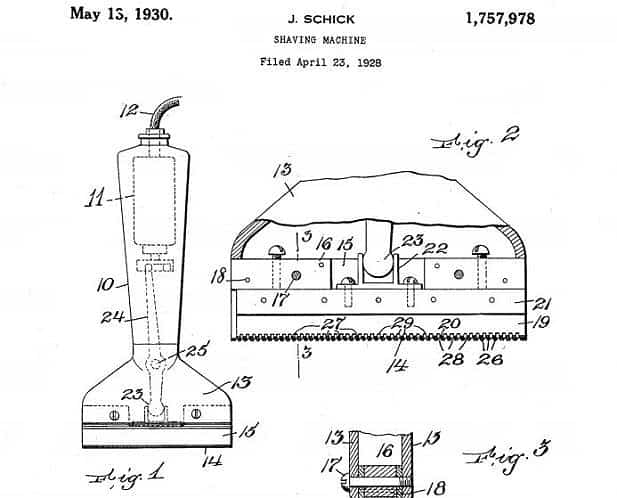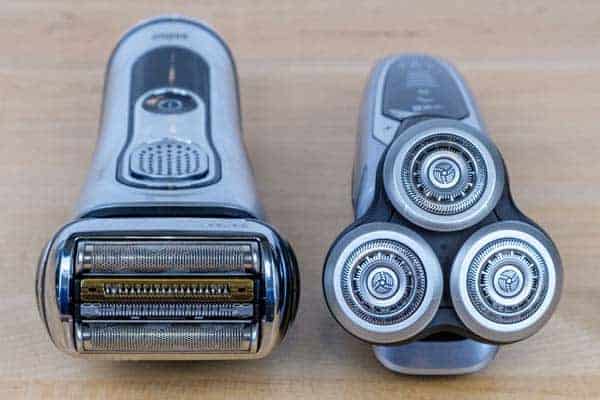The evolution of electric razors is a fascinating story of innovation and technological advancement. From the first bulky and loud models of the 1930s to the sleek and sophisticated devices of today, electric razors have come a long way. This journey has been shaped by the needs and desires of people looking for a more convenient and effective way to shave.
In this article, we will explore the rich history of electric razors, tracing their development from their early beginnings to the modern-day marvels that they have become. Whether you’re a seasoned shaver or simply curious about the history of this essential tool, this article is sure to provide valuable insight and inspiration.
1920: The Birth of the Electric Razor
The idea of an electric razor first came to Colonel Jacob Schick while he was recuperating from an injury sustained during gold exploration in Alaska and British Columbia in the 1910s. He found it difficult to shave and, with time on his hands, drew up plans for a bulky shaver powered by a large external motor. However, manufacturers rejected the invention due to its bulkiness.

1925: The Magazine Repeating Razor
Inspired by the weaponry he saw in the military, Schick went on to develop the Magazine Repeating Razor. The razor’s design used the principles of repeating firearms and blades were sold in clips and loaded into the razor without having to touch them. Although the Magazine Repeating Razor was successful, Schick went back to developing the dry electric razor.
1927: A Fully Marketable Electric Dry Shaver
In 1927, Schick’s invention of the dry electric razor was finally marketable. So confident was he of the electric dry shaver’s potential, Schick sold the assets of his razor company in 1928 to capitalize on the new invention.
On May 13, 1930, Colonel Jacob Schick obtained patent No. 1,757,978 for his dry electric shaver. This marked the official birth of the electric razor as we know it today.
The 1930s – 1940s: The Birth of Electric Razors
he first electric razors appeared in the 1930s, marking a major milestone in the history of shaving. These early electric razors were bulky, loud, and had limited mobility, but they were still a significant improvement over traditional razors.
Colonel Jacob Schick patented the first dry electric razor on May 13, 1930. The idea for the razor came to him while he was recovering from an injury during gold exploration in Alaska and British Columbia in the 1910s. He drew up plans for a bulky shaver powered by a large external motor, but manufacturers rejected it. Plans were put on hold during World War I, but Schick eventually patented the electric dry razor.
1940s to 1950s: The Golden Age of Electric Razors
During the 1940s and 1950s, the popularity of electric razors skyrocketed. Manufacturers started to introduce new models with improved design and technology, and advertisements for electric razors started appearing in magazines and on television. This period marked the golden age of electric razors and the beginning of their widespread adoption.
In the 1940s, new technology allowed for the development of wet/dry electric razors, which could be used in the shower or with shaving cream. This was a game-changer for electric razors, as it made them more convenient and versatile.
1960s to 1970s: The Introduction of Cordless Electric Razors
In the 1960s and 1970s, cordless electric razors were introduced, offering greater convenience and mobility. This development marked a major milestone in the evolution of electric razors, as users no longer had to be tethered to a wall outlet while shaving. Instead, they could now enjoy the freedom to shave anywhere, anytime.
In the late 1940s, the first electric razors that were battery-powered entered the market. Then, in 1960, Remington revolutionized the game by launching the first rechargeable battery-powered electric razor.
These battery-operated razors were equipped with rechargeable batteries, initially nickel-cadmium and later nickel metal hydride, that were sealed inside the razor’s case. Today’s advanced electric razors utilize Lithium-ion batteries, which don’t have the memory effect issue.
1980s to 1990s: The Era of Advanced Technology
During the 1980s and 1990s, manufacturers continued to push the boundaries of what was possible with electric razors. Advanced technology such as rotary shaver heads, and multi-blade systems were introduced, offering a closer, more comfortable shave. This period marked the beginning of the era of advanced technology in electric razors.
In the 1980s, rotary electric razors became the norm, offering a more comfortable and effective shave. These razors were equipped with three or four rotating blades, which allowed for a smoother and closer shave.
In the 1980s, foil electric razors were introduced, offering an even closer and more comfortable shave than rotary razors. These razors used a thin metal foil to protect the skin from the blades, providing a gentler and more effective shave.
2000 – Present: The Evolution of Electric Razors
In the 2000s, electric razors continued to evolve, with the introduction of new technologies such as multi-directional heads, flexible blades, and waterproof designs. Today, electric razors come in a wide range of styles and designs, offering a wide range of features to meet the needs of all types of shavers.
From its humble beginnings as a bulky, clunky invention, the electric razor has come a long way. Today, it is a sleek, sophisticated tool that offers the ultimate in convenience, comfort, and personalization. Whether you prefer a wet or dry shave, there is an electric razor out there that is perfect for you.
History of Electric Razor FAQs
Q: Who invented the electric razor?
A: The electric razor was invented by Jacob Schick, an American entrepreneur and inventor, in 1928.
Q: When did electric razors become popular?
A: Electric razors gained popularity in the mid-20th century, particularly during the 1950s and 1960s, as advancements in technology made them more efficient and convenient to use.
Q: What were the early electric razors like?
A: Early electric razors were relatively bulky and required an external power source. They were often connected to a wall socket and had limited mobility.
Q: When were battery-powered electric razors introduced?
A: Battery-powered electric razors were introduced in the 1960s, providing greater convenience and portability compared to earlier models.
Q: How did electric razors revolutionize shaving?
A: Electric razors revolutionized shaving by offering a faster and more convenient alternative to manual razors. They eliminated the need for water, shaving cream, and a continuous supply of blades.
Q: What were the major advancements in electric razor technology?
A: Over the years, electric razors have seen several advancements, including the introduction of rotary blades, multiple cutting elements, wet/dry functionality, and automatic cleaning systems. These advancements have enhanced the performance and user experience of electric razors.
Q: How has the design of electric razors evolved over time?
A: The design of electric razors has undergone significant changes over time. Early models were larger and bulkier, while modern electric razors are sleeker, ergonomic, and feature various design elements for improved handling and comfort.
Q: Are electric razors more expensive than manual razors in the long run?
A: While electric razors may have a higher upfront cost compared to manual razors, they can be cost-effective in the long run. Electric razors eliminate the need for frequent blade replacements, shaving cream, and aftershave products, which can result in long-term savings.
Conclusion
From their humble beginnings in the 1930s, electric razors have come a long way. Today, they are an essential tool for millions of men and women around the world, offering a convenient, comfortable, and effective shave. The history of electric razors is a testament to the power of innovation and the drive to make our lives easier and more enjoyable.

Bradley Martyn – Grooming Expert with 20+ years of first‑hand experience testing electric shavers in the United Kingdom, United States, and United Arab Emirates. My reviews are based on rigorous, real‑world testing and a commitment to transparent, unbiased insights.
Our Testing MethodologyI personally evaluate each shaver through multiple shave cycles, both wet (with cream or gel) and dry, assessing closeness, comfort on sensitive skin, battery endurance, and ease of cleaning.
If you found the information useful, consider subscribing to the Trimmereo newsletter as well. It’s free and I only send a few emails per month. Unsubscribe at any time.

